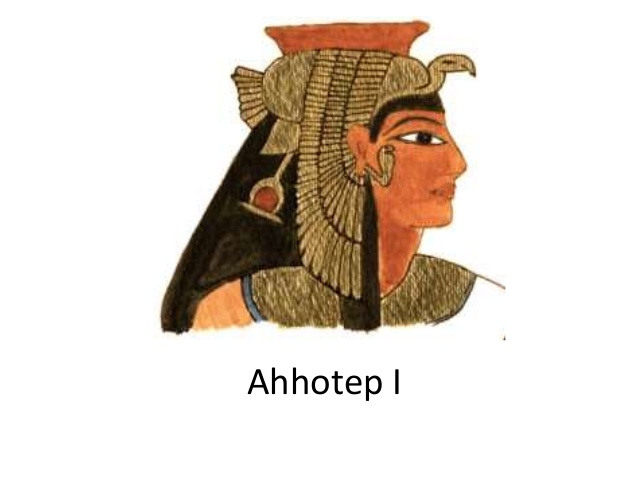
A stela at Karnak dating from the sixteenth century BCE
gives us our first evidence of a woman proving influential in a military
sphere: on it, Ahhotep I (c. 1560-1530 BCE) is described as `having pulled
Egypt together, having cared for its army, having guarded it, having brought
back those who fled, gathering up its deserters, having pacified the South,
subduing those who defy her’. The tomb of Ahhotep II contained her
now-destroyed mummy and gold and silver jewellery as well as daggers and an
inscribed ceremonial axe blade made of copper, gold, electrum and wood; three
golden flies were found too: these were usually awarded to people who served
bravely in the army.
Unique epithets are given to her: ‘one who cares for Egypt;
she has looked after her soldiers . . . she has brought back her fugitives, and
collected her deserters; she has pacified Upper Egypt, and expelled her
rebels.’
It is an extraordinary encomium for an exceptional woman. As
well as recording Ahhotep’s role in governing the country, the verses more than
hint at her involvement in putting down the rebellion of Tetian and reimposing
law and order throughout the land. It is no coincidence that Ahhotep’s grave
goods from her grateful son included a necklace of golden flies, awarded for
bravery in battle (the fly was an appropriate symbol of perseverance). She was
evidently a force to be reckoned with, and would serve as a powerful role model
for other ambitious royal women later in the dynasty.
Ahhotep’s curious epithet, mistress of the shores of
Hau-nebut, is particularly tantalizing. Much later, in the Ptolemaic Period,
the phrase “Hau-nebut” was used to refer to Greece, and it suggests a
connection between the Eighteenth Dynasty Egyptian royal family and the Minoan
civilization of Crete. It may be no coincidence that, in addition to the golden
flies, Ahhotep’s burial equipment included two objects, a dagger and an axe,
with characteristically Minoan decoration.
The wife of SEQENENRE TAO II, who died in the campaigns waged to expel the Hyksos from Egypt, Ahhotep was one of the several powerful and determined women who exercised considerable influence in the New Kingdom, especially in the Eighteenth Dynasty, of which she was long revered as the ancestress. On Seqenenre Tao’s death his son KAMOSE succeeded; it is not known for certain if he was the child of Ahhotep. Although Kamose was instrumental in carrying on the war against the Hykos after Seqenenre Tao’s death, he did not long survive his father. After his death, Seqenenre Tao’s son by Ahhotep, AHMOSE, was proclaimed king. He was too young to undertake the full responsibilities of the kingship and his mother acted as regent until he was sixteen. Ahhotep probably died in the early years of her son’s reign; she was rewarded with divine honours and a long-surviving cult was established in her memory.